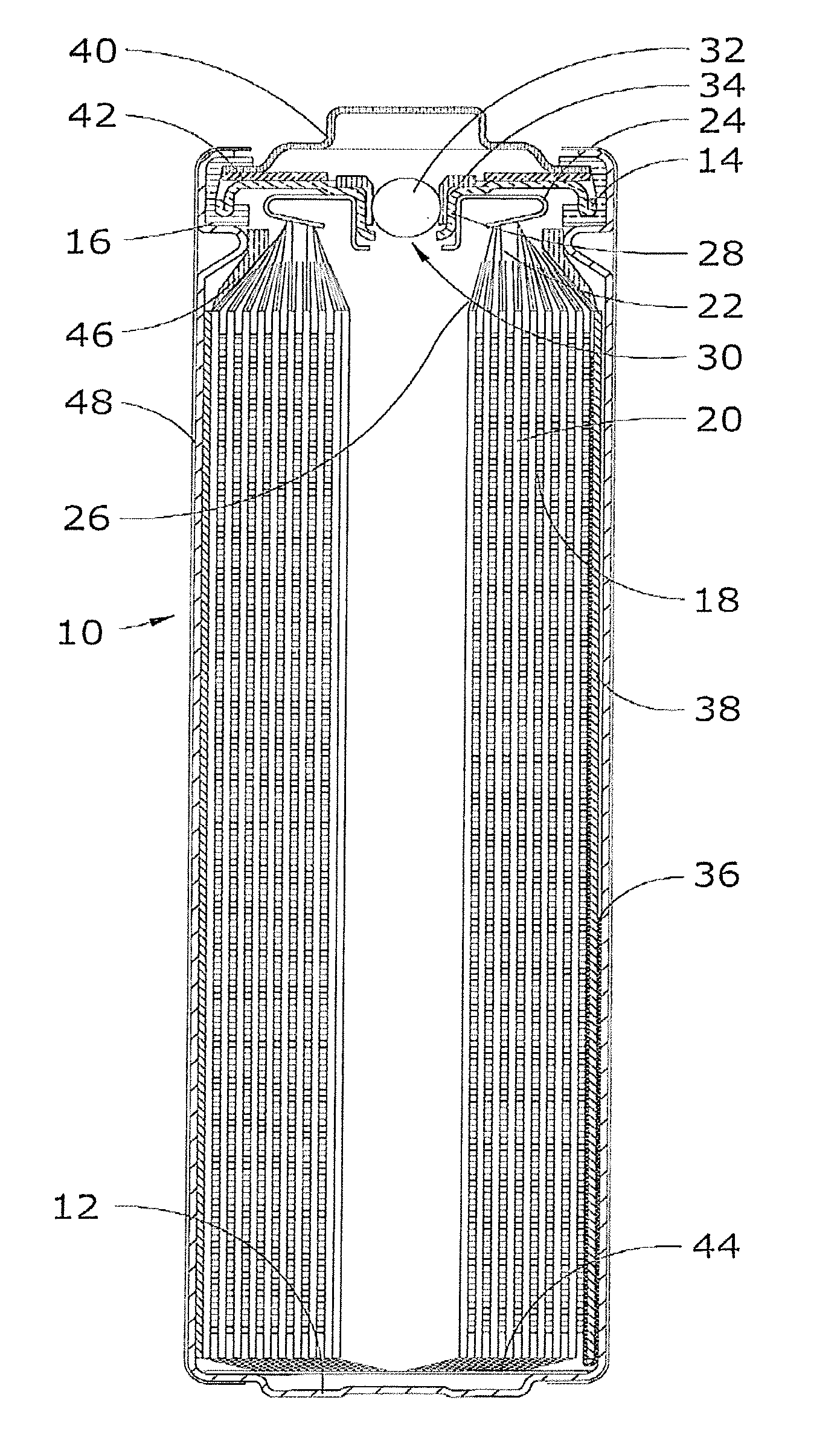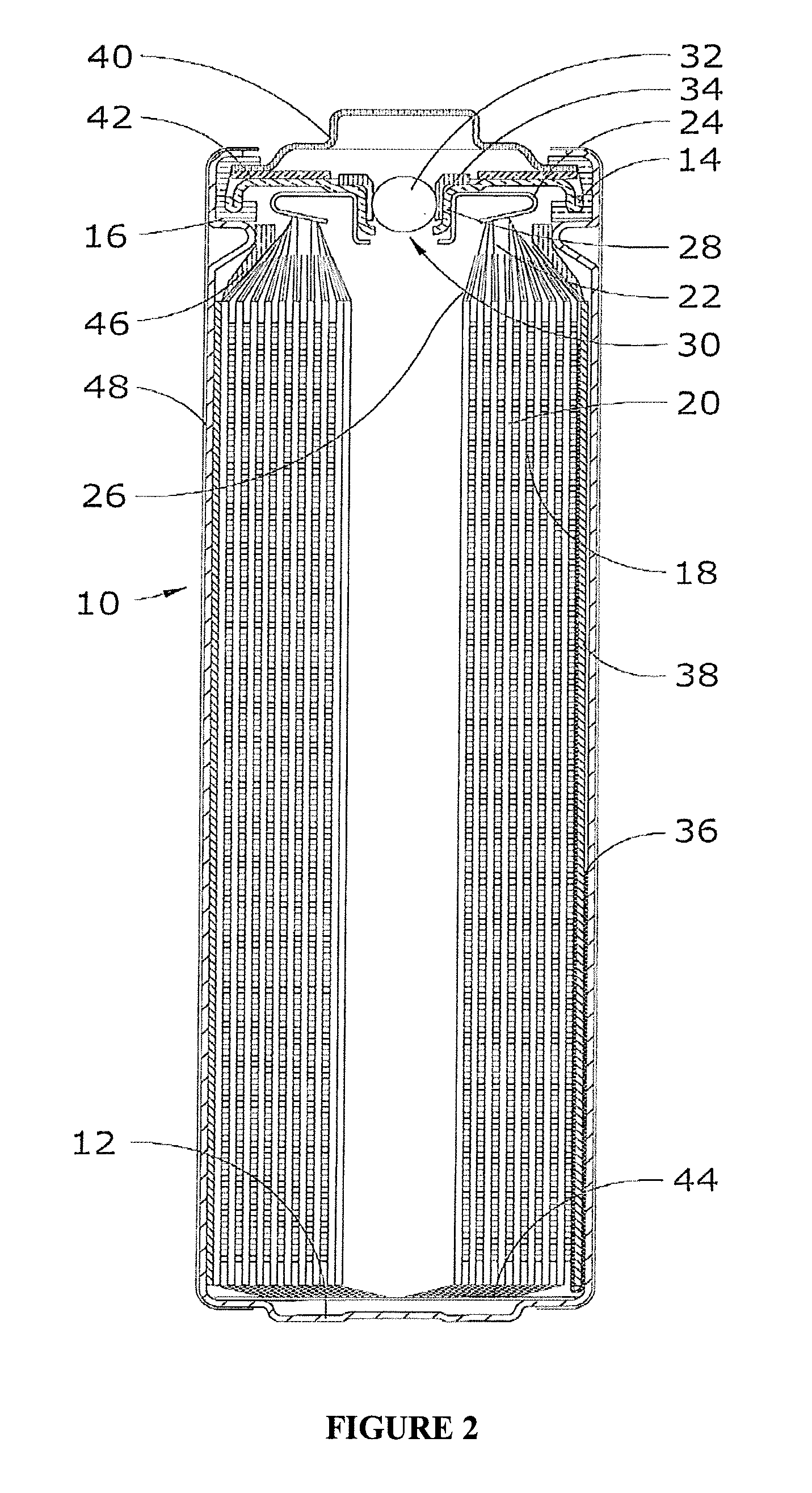Lithium-Iron Disulfide Cell Design
a technology of lithium iron disulfide and cell, applied in the field of primary electrochemical cells, can solve problems such as compressing collectors, and achieve the effects of improving energy density, avoiding compromising safety or reliability baselines, and superior service for fr6
- Summary
- Abstract
- Description
- Claims
- Application Information
AI Technical Summary
Benefits of technology
Problems solved by technology
Method used
Image
Examples
example 1
[0100]In this example, an electrochemical cell comprising lithium as the active anode material and pyrite as the active cathode material is constructed as follows. A continuous strip of lithium metal foil alloyed with aluminum is provided along with an aluminum cathode current collector continuous strip. A cathode coating slurry is prepared using the following solids:
MaterialWeight % (dry)density (g / cm3)pyrite96.74.82PureBlack ™ 205-110 conductor1.82.0Kraton ® G1651 polymeric binder1.20.91Aerosil ® processing aid0.32.204.461 g / cc
[0101]PureBlack™ (carbon black) 205-110 is available from Superior Graphite, Chicago, Ill. Alternatively, the conductor may be MX15 from Timcal Westlake, Ohio. The binder / processing aids may comprise a styrene-ethylene / butylenes-styrene (SEBS) block copolymer, such as Kraton® G1651 from Kraton Polymers, Houston, Tex. and Aerosil® fumed silica from Evonik Industries AG, Essen, Germany.
[0102]Battery grade iron pyrite with a purity level of 95 wt. % available f...
example 2
[0105]A battery is fabricated in a similar fashion to Example 1, except the cathode coating slurry is prepared using the following solids:
MaterialWeight % (dry)density (g / cm3)pyrite96.54.82PureBlack ™ 205-110 conductor1.82.0Kraton ® G1651 polymeric binder1.20.91Efka ® processing aid0.51.154.410 g / cc
[0106]Efka® 6950 is available from Ciba, Heerenveen, Netherlands. Other suppliers of over base calcium sulfonates may also be utilized.
[0107]A range of representative prior art cathode mixes as compared to Examples 1 and 2 is shown in Tables 2a and 2b below, along with information from column 5 of U.S. Pat. No. 6,849,360 providing a specific example of such previously known mixes.
PUM
| Property | Measurement | Unit |
|---|---|---|
| density | aaaaa | aaaaa |
| thickness | aaaaa | aaaaa |
| thickness | aaaaa | aaaaa |
Abstract
Description
Claims
Application Information
 Login to View More
Login to View More - R&D
- Intellectual Property
- Life Sciences
- Materials
- Tech Scout
- Unparalleled Data Quality
- Higher Quality Content
- 60% Fewer Hallucinations
Browse by: Latest US Patents, China's latest patents, Technical Efficacy Thesaurus, Application Domain, Technology Topic, Popular Technical Reports.
© 2025 PatSnap. All rights reserved.Legal|Privacy policy|Modern Slavery Act Transparency Statement|Sitemap|About US| Contact US: help@patsnap.com



